Unlocking the Mysteries Behind Gold Price Movements in 2025
As we approach 2025, investors and market watchers alike are keen to understand what drives the elusive fluctuations of gold prices. The precious metal, long regarded as a bulwark against economic uncertainty, is once again at the crossroads of multiple global forces. Beyond mere speculation, a nuanced analysis reveals how macroeconomic dynamics, geopolitical tensions, and evolving investor behavior converge to influence gold’s market value. This deep dive aims to illuminate those critical factors, empowering you with expert insights to navigate the gold investment landscape with confidence.
Global Economic Currents: Inflation, Interest Rates, and Currency Dynamics
One of the most potent drivers of gold prices is the interplay between inflation expectations and real interest rates. Historically, gold shines brightest when inflation outpaces nominal interest rates, eroding the purchasing power of fiat currencies. In 2025, central banks’ monetary policies—especially those of the Federal Reserve and European Central Bank—will be pivotal. For instance, if interest rates remain low or decline amidst persistent inflation, gold’s allure as a non-yielding asset intensifies, often bolstering its price.
Currency strength, particularly the U.S. dollar’s trajectory, also plays a decisive role. A weaker dollar typically enhances gold’s appeal to holders of other currencies, driving demand upward. Conversely, a robust dollar can temper gold’s price momentum. Investors should watch these economic signals closely, as their subtle shifts often precede notable gold price adjustments.
The Geopolitical Chessboard: Tensions and Safe-Haven Demand
Geopolitical uncertainty remains an enduring catalyst for gold’s market behavior. From trade disputes to regional conflicts, such developments amplify gold’s reputation as a safe haven. For example, recent escalations in global hotspots have historically triggered surges in gold buying as investors seek refuge from volatility in equities and bonds. In 2025, any intensification of geopolitical risks could reinforce this pattern, underpinning gold’s market value.
How Do Technological Advances and Market Innovations Influence Gold Price Forecasts?
Beyond traditional factors, technological progress in trading platforms and market accessibility is reshaping gold investment. The rise of digital gold ETFs, blockchain-based gold tokens, and algorithmic trading strategies has increased liquidity and market responsiveness. These innovations create both opportunities and complexities, as rapid price swings can occur due to algorithmic triggers or shifting investor sentiment. Understanding these dynamics is crucial for interpreting gold price forecasts and crafting effective investment strategies.
Supply and Demand: Mining Output and Emerging Market Consumption
Physical supply constraints and evolving demand patterns form the backbone of gold’s intrinsic valuation. Mining production forecasts suggest moderate growth, but supply disruptions due to environmental regulations or geopolitical instability in key mining regions could tighten markets. On the demand side, emerging markets like India and China continue to show robust appetite for gold jewelry and investment products, often influenced by cultural factors and economic growth trajectories.
Moreover, central banks’ strategic gold purchases as part of reserve diversification add another layer of demand pressure. These combined forces create a delicate balance that will shape price trends throughout 2025.
Expert Insights: Leveraging Forecasts for Strategic Gold Investment
To capitalize on these multifaceted influences, investors should adopt an informed, flexible approach. Monitoring central bank policies, geopolitical developments, and technological trends will offer vital clues for timing gold purchases or sales. For those new to gold investing, resources like gold market analysis 2025 trends every investor should know provide comprehensive guidance.
Integrating these insights with a diversified portfolio strategy can harness gold’s role as a hedge and growth asset. As always, consider consulting with financial advisors to tailor decisions to your risk profile and investment horizon.
Have thoughts or experiences with gold investing in 2025? Share your perspective in the comments below to foster a community of savvy investors navigating this dynamic market.
For those interested in expanding their knowledge, the World Gold Council offers in-depth research and data on gold market trends that can further enhance your strategic planning (World Gold Council Research).
Reflections on My Own Gold Investment Journey in 2025
Reflecting on my personal experience investing in gold this year, I’ve come to appreciate how dynamic and multifaceted the market truly is. Early in 2025, I was cautiously optimistic due to the prevailing low interest rates and rising inflation indicators. However, it was the geopolitical tensions that caught me off guard, causing some unexpected price spikes. These fluctuations reinforced my belief that gold, while traditionally a safe haven, requires active attention and adaptability rather than a “set it and forget it” approach.
One practical step I took was diversifying within the gold sector itself — balancing physical gold coins with some exposure to gold ETFs. This approach helped me manage liquidity without losing the security of tangible assets. For those curious about the differences between these options, the types of gold investments article I found especially helpful offers a clear breakdown.
How Do Seasonal and Cultural Factors Impact Gold Demand and Prices?
Something I hadn’t fully considered until recently is how seasonal and cultural events significantly impact gold demand, especially in emerging markets. For instance, in countries like India, the wedding season and festivals such as Diwali traditionally spur higher gold purchases, driving up prices temporarily. This pattern creates interesting short-term opportunities and risks that savvy investors can leverage.
Similarly, Chinese New Year celebrations often coincide with increased demand for gold jewelry and gifts. Recognizing these cyclical trends can be a valuable addition to your investment toolkit, helping anticipate demand surges beyond the usual economic indicators.
Technological Tools That Have Changed My Approach to Gold Trading
In recent months, embracing technology has transformed how I track and trade gold. Utilizing advanced trading platforms with real-time data, alerts for price movements, and even algorithmic trading options has empowered me to respond swiftly to market changes. The increased liquidity and transparency also make it easier to enter or exit positions without significant slippage.
If you’re a beginner or even an experienced trader looking to optimize, exploring gold trading tools can provide an edge. They help demystify complex market patterns and support more informed decision-making.
What Are the Risks I’ve Learned to Watch Out For in Gold Investing?
Gold investment is not without its pitfalls. One lesson I’ve learned is to be wary of market hype and price speculation, which can lead to ill-timed purchases. Also, understanding the importance of secure storage cannot be overstated — physical gold requires safe-keeping solutions that are both practical and cost-effective.
Moreover, timing the market is tricky; gold prices can be volatile in the short term despite their reputation as a long-term hedge. Reading up on safe gold investment tips for new buyers helped me avoid common mistakes and build a more resilient portfolio.
How Do Experts Predict Gold Price Trends Amid So Many Variables?
Experts often rely on a combination of macroeconomic indicators, geopolitical risk assessments, and technological market data to forecast gold prices. The World Gold Council, for example, continuously updates research that helps investors understand shifting demand and supply dynamics globally. Their reports provide invaluable context beyond simple price charts.1
Personally, I follow these developments closely while not losing sight of my long-term goals. Balancing informed forecasting with a steady hand has been key to my strategy.
If you’ve had your own journeys or challenges with gold investing this year, I’d love to hear your stories. Feel free to share your experiences or questions in the comments below. Together, we can build a community that supports smart, confident gold investment decisions.
Decoding Complex Risk Factors: Navigating Volatility and Market Sentiment in Gold Investment
While gold is traditionally perceived as a haven asset during periods of uncertainty, the market’s complexity demands a sophisticated understanding of risk beyond basic volatility metrics. In 2025, factors such as rapid shifts in investor sentiment, algorithmic trading-induced flash events, and geopolitical surprises can trigger abrupt price adjustments. This necessitates a proactive risk assessment framework that incorporates quantitative tools like Value at Risk (VaR) and Conditional VaR, alongside qualitative analysis of geopolitical developments.
Investors should be mindful of liquidity risk as well. Despite gold’s high market capitalization, certain investment vehicles—especially niche ETFs or digital gold tokens—may exhibit thin trading volumes during market stress, potentially impeding timely exits. Incorporating stop-loss strategies and diversifying across physical and digital formats can mitigate such risks effectively.
What sophisticated indicators should investors monitor to predict short-term gold price volatility?
Expert traders often track a confluence of indicators to anticipate short-term price movements. These include the Commitment of Traders (COT) reports that reveal speculative positioning, the gold to real interest rate differential, and the correlation between gold and Treasury yields. Moreover, the analysis of market microstructure—such as order book depth and bid-ask spreads on major exchanges—can provide early warnings of impending volatility. Staying attuned to sudden shifts in these indicators enhances tactical positioning in volatile environments.
Integrating ESG Considerations: The Emerging Influence of Sustainability on Gold Mining and Investment
Environmental, Social, and Governance (ESG) factors are increasingly shaping gold’s supply dynamics and investor preferences. Mining companies adhering to stringent ESG standards often face higher operational costs but benefit from improved regulatory access and investor confidence. Conversely, those lagging in sustainability risk reputational damage and capital flight.
From an investment standpoint, ESG-compliant gold products—ranging from responsibly sourced physical gold to green digital tokens—are gaining traction, particularly among institutional investors aiming to align portfolios with sustainability goals. This trend is expected to influence gold’s valuation structure subtly, as premiums for ESG-certified bullion may emerge, reflecting the growing market segmentation.
According to a detailed analysis by the World Gold Council on ESG in Gold Mining, companies with transparent ESG reporting demonstrate enhanced resilience and access to capital, underscoring the importance of sustainability integration for long-term value creation.2
Advanced Portfolio Construction: Balancing Gold with Alternative Assets and Hedging Instruments
Expert investors are increasingly adopting multifaceted portfolio strategies where gold serves as a dynamic component rather than a static hedge. This involves integrating gold with alternative assets such as cryptocurrencies, real estate investment trusts (REITs), and inflation-protected securities. The goal is to optimize diversification benefits while managing correlation risks that may fluctuate during market stress.
Additionally, employing derivative instruments like gold futures and options can enhance portfolio flexibility, providing avenues for hedging downside risk or capitalizing on short-term price dislocations. However, these tools require sophisticated understanding and risk controls to avoid amplified losses.
In practice, a layered approach that combines physical holdings, ETFs, and selective derivative exposure can be tailored to an investor’s risk tolerance and market outlook. This advanced strategy demands continuous monitoring and adjustment aligned with evolving economic indicators and geopolitical signals.
For investors seeking to deepen their expertise, exploring resources on advanced gold investment strategies offers actionable frameworks and case studies demonstrating effective portfolio integration.
Decoding Complex Risk Factors: Navigating Volatility and Market Sentiment in Gold Investment
While gold is traditionally perceived as a haven asset during periods of uncertainty, the market’s complexity demands a sophisticated understanding of risk beyond basic volatility metrics. In 2025, factors such as rapid shifts in investor sentiment, algorithmic trading-induced flash events, and geopolitical surprises can trigger abrupt price adjustments. This necessitates a proactive risk assessment framework that incorporates quantitative tools like Value at Risk (VaR) and Conditional VaR, alongside qualitative analysis of geopolitical developments.
Investors should be mindful of liquidity risk as well. Despite gold’s high market capitalization, certain investment vehicles—especially niche ETFs or digital gold tokens—may exhibit thin trading volumes during market stress, potentially impeding timely exits. Incorporating stop-loss strategies and diversifying across physical and digital formats can mitigate such risks effectively.
What sophisticated indicators should investors monitor to predict short-term gold price volatility?
Expert traders often track a confluence of indicators to anticipate short-term price movements. These include the Commitment of Traders (COT) reports that reveal speculative positioning, the gold to real interest rate differential, and the correlation between gold and Treasury yields. Moreover, the analysis of market microstructure—such as order book depth and bid-ask spreads on major exchanges—can provide early warnings of impending volatility. Staying attuned to sudden shifts in these indicators enhances tactical positioning in volatile environments.
Integrating ESG Considerations: The Emerging Influence of Sustainability on Gold Mining and Investment
Environmental, Social, and Governance (ESG) factors are increasingly shaping gold’s supply dynamics and investor preferences. Mining companies adhering to stringent ESG standards often face higher operational costs but benefit from improved regulatory access and investor confidence. Conversely, those lagging in sustainability risk reputational damage and capital flight.
From an investment standpoint, ESG-compliant gold products—ranging from responsibly sourced physical gold to green digital tokens—are gaining traction, particularly among institutional investors aiming to align portfolios with sustainability goals. This trend is expected to influence gold’s valuation structure subtly, as premiums for ESG-certified bullion may emerge, reflecting the growing market segmentation.
According to a detailed analysis by the World Gold Council on ESG in Gold Mining, companies with transparent ESG reporting demonstrate enhanced resilience and access to capital, underscoring the importance of sustainability integration for long-term value creation.2
Advanced Portfolio Construction: Balancing Gold with Alternative Assets and Hedging Instruments
Expert investors are increasingly adopting multifaceted portfolio strategies where gold serves as a dynamic component rather than a static hedge. This involves integrating gold with alternative assets such as cryptocurrencies, real estate investment trusts (REITs), and inflation-protected securities. The goal is to optimize diversification benefits while managing correlation risks that may fluctuate during market stress.
Additionally, employing derivative instruments like gold futures and options can enhance portfolio flexibility, providing avenues for hedging downside risk or capitalizing on short-term price dislocations. However, these tools require sophisticated understanding and risk controls to avoid amplified losses.
In practice, a layered approach that combines physical holdings, ETFs, and selective derivative exposure can be tailored to an investor’s risk tolerance and market outlook. This advanced strategy demands continuous monitoring and adjustment aligned with evolving economic indicators and geopolitical signals.
For investors seeking to deepen their expertise, exploring resources on advanced gold investment strategies offers actionable frameworks and case studies demonstrating effective portfolio integration.
Frequently Asked Questions (FAQ)
What are the main factors influencing gold prices in 2025?
Gold prices in 2025 are primarily driven by the interplay of inflation and real interest rates, the strength of the U.S. dollar, geopolitical tensions, supply-demand dynamics including mining output and emerging market consumption, and evolving investor behavior shaped by technological innovations and ESG considerations.
How does inflation affect gold’s attractiveness as an investment?
When inflation exceeds nominal interest rates, gold becomes more attractive as it preserves purchasing power compared to fiat currencies. Low or negative real interest rates reduce opportunity costs of holding non-yielding assets like gold, often leading to price appreciation.
Can geopolitical events cause sudden gold price spikes?
Yes, geopolitical uncertainties such as conflicts, trade disputes, or crises increase safe-haven demand for gold, potentially triggering rapid price surges as investors seek stability amid market volatility.
What role do technological advances play in gold trading and investment?
Technological progress has introduced digital gold tokens, gold ETFs, and algorithmic trading, increasing market liquidity and accessibility. These tools enable faster responses to price changes but also contribute to higher short-term volatility.
How important is ESG compliance in gold mining and investment?
ESG compliance is increasingly critical as it influences mining operational costs, regulatory access, investor confidence, and capital flows. ESG-certified gold products are gaining market premiums, reflecting growing investor preference for sustainability.
What sophisticated indicators should investors monitor for short-term gold price volatility?
Investors should track Commitment of Traders (COT) reports, gold-to-real interest rate differentials, correlations with Treasury yields, and market microstructure data such as order book depth and bid-ask spreads to anticipate short-term volatility.
How can investors balance gold with other assets in their portfolios?
Advanced portfolio strategies integrate gold with alternative assets like cryptocurrencies, REITs, and inflation-protected securities to optimize diversification. Derivatives such as futures and options can be used for hedging or tactical positioning, tailored to risk tolerance and market outlook.
What risks should new gold investors be aware of?
New investors must watch for market hype, timing risks, storage and security challenges, liquidity constraints in certain gold products, and the potential for short-term price volatility despite gold’s reputation as a long-term hedge.
How do seasonal and cultural factors impact gold demand?
Seasonal and cultural events like India’s wedding season, Diwali, and Chinese New Year significantly boost gold demand temporarily, affecting prices especially in emerging markets and creating cyclical investment opportunities.
Where can I find reliable, up-to-date gold market research?
Authoritative sources such as the World Gold Council provide comprehensive research, data, and market analysis that help investors understand supply-demand trends, ESG developments, and price forecasts.
Trusted External Sources
- World Gold Council (https://www.gold.org): The premier authority on gold market data, research, and sustainability insights, offering detailed reports on demand drivers, ESG in gold mining, and investment trends.
- International Monetary Fund (IMF) Reports: Provides macroeconomic analyses including inflation, currency dynamics, and monetary policy impacts relevant to gold price movements.
- Commodity Futures Trading Commission (CFTC) Commitment of Traders Reports: Offers transparency on speculative and commercial positioning in gold futures markets, crucial for tracking investor sentiment.
- Bloomberg and Reuters Commodities Desks: Deliver real-time market data, geopolitical developments, and expert commentary essential for timely gold price analysis.
- Academic Journals such as the Journal of Commodity Markets: Publish peer-reviewed research on quantitative modeling, risk assessment, and advanced investment strategies in precious metals.
Conclusion
Understanding gold price dynamics in 2025 requires a holistic grasp of macroeconomic factors, geopolitical risks, supply-demand balances, technological innovations, and emerging ESG trends. Gold remains a vital component of diversified portfolios, offering both a hedge against inflation and safe-haven protection during uncertainty. Yet, successful investment demands continuous monitoring of sophisticated indicators, awareness of market risks, and strategic integration with alternative assets and derivatives.
By leveraging expert insights and trusted research resources, investors can navigate the complex gold market landscape with greater confidence and agility. Whether you are a seasoned professional or a newcomer, applying these nuanced perspectives will enhance your ability to optimize gold investments amid evolving global conditions.
We invite you to share your thoughts, experiences, and questions about gold investing in 2025 in the comments below, and explore our related expert content to deepen your knowledge and investment acumen.




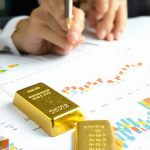

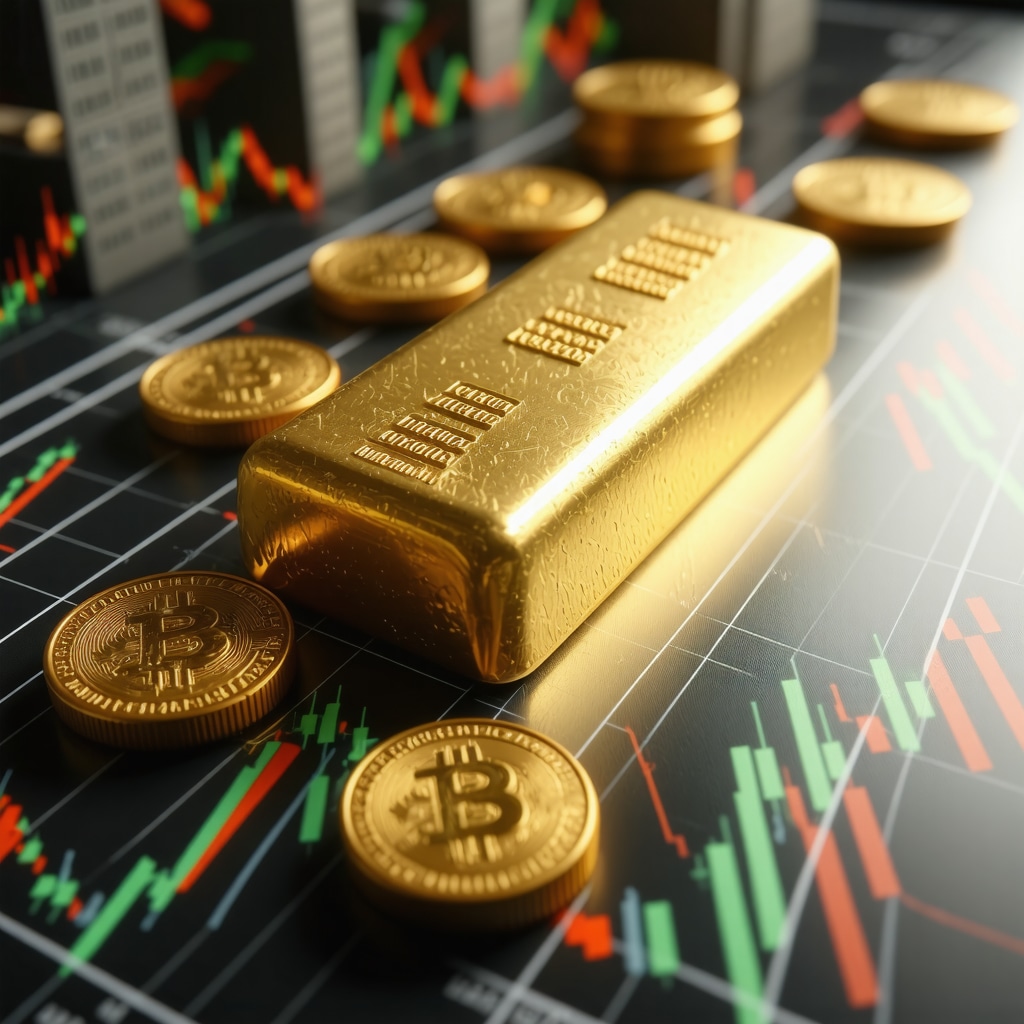
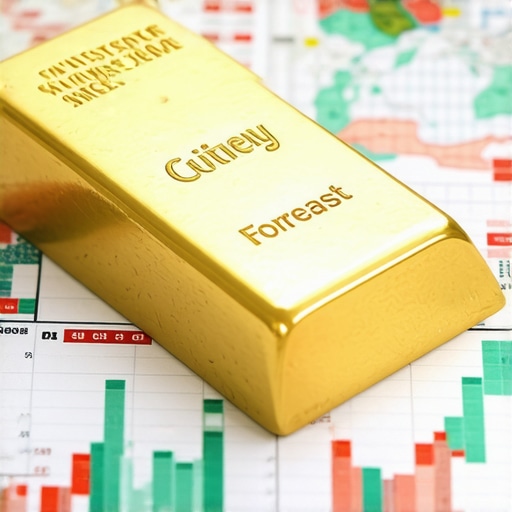

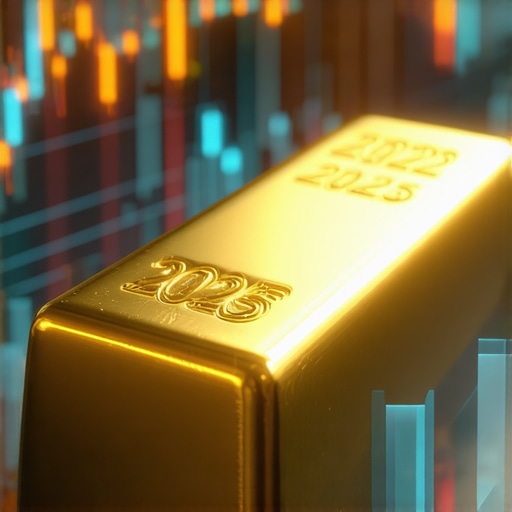
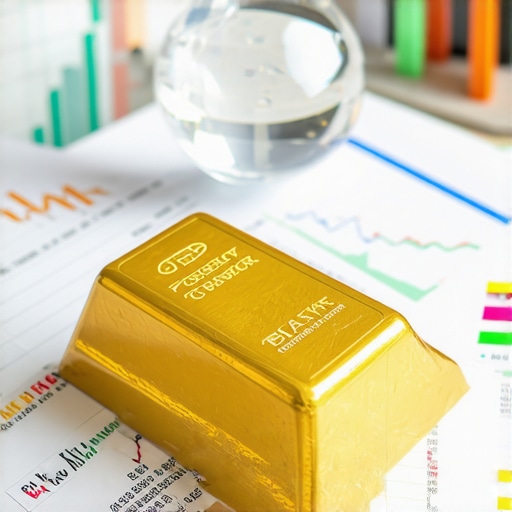
I found this analysis of the potential drivers of gold prices in 2025 really insightful, especially the emphasis on geopolitical risks and technological advances. Personally, I’ve been watching how digital gold and blockchain-based tokens are gaining popularity as they offer greater liquidity and ease of transfer, which seems to make gold more accessible for everyday investors. One challenge I see, however, is the need for investors to understand these new platforms thoroughly to avoid pitfalls.